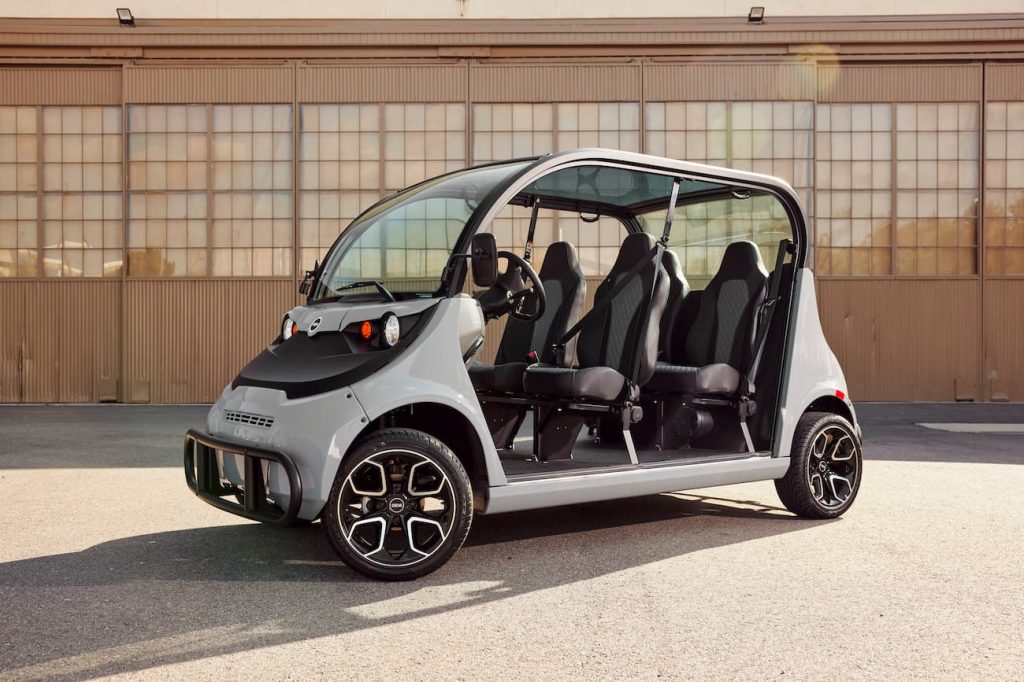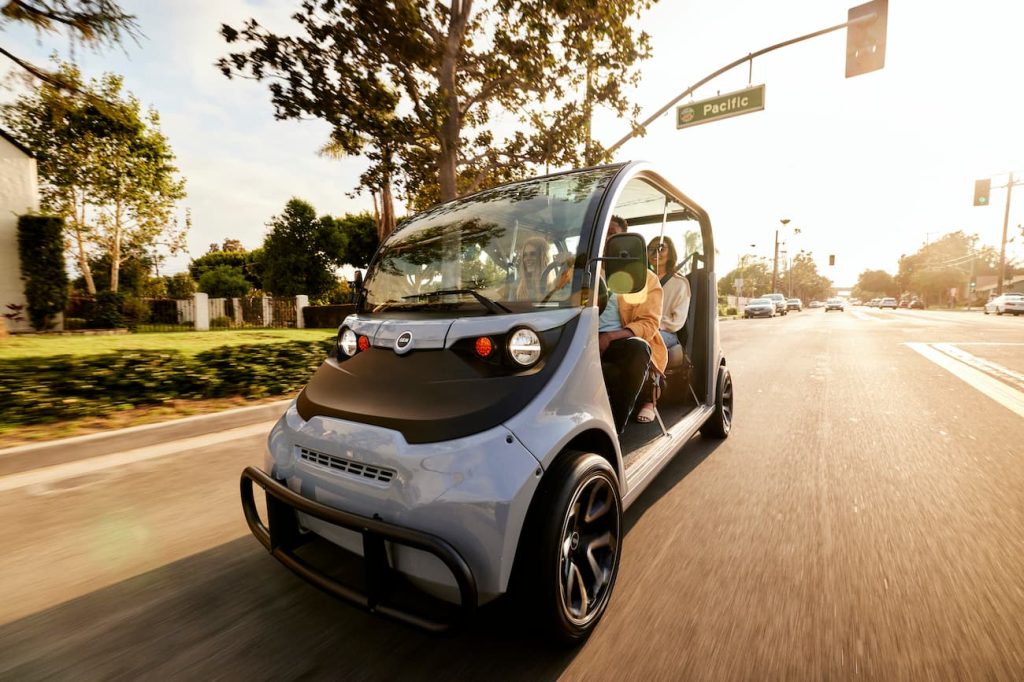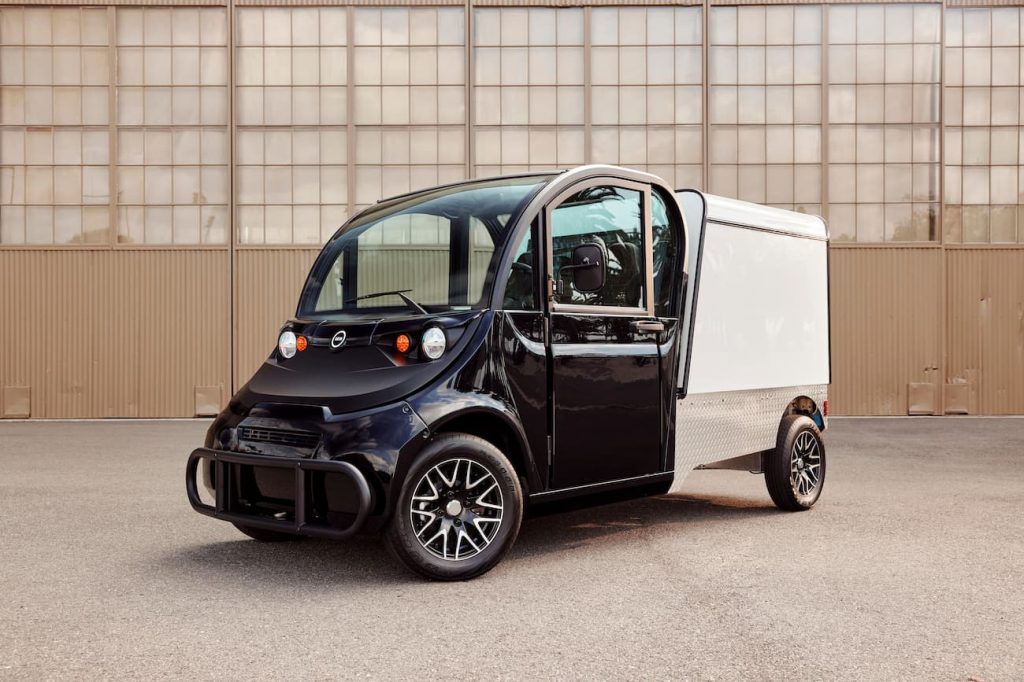
GEM, the company that makes all of those fun-looking people movers you see at places like airports, sports complexes, and hotels, has just launched its new 2024 line of low-speed vehicles (LSVs). And now they’re more “automotive like” than ever.
GEM is pretty much the undisputed leader in the LSV industry in the US. LSVs are street-legal, four-wheeled vehicles that are certified to Federal Motor Vehicle Safety Standards, come with a top speed of 25 mph (40 km/h), and are federally approved to travel on public roads with speed limits of 35 mph (56 km/h) or less.
GEM makes both passenger and utility versions of its LSVs, and the appearance falls somewhere between a golf cart and a micro-car. Just don’t call these “golf carts”; they’re so much more.
And now with the new 2024 model year lineup being unveiled today, that “so much more” just got even better.

As the CEO of GEM’s parent company, WAEV, Keith Simon, explained that more people than ever are adopting LSVs as regular-use vehicles instead of larger, costlier, and more energy-intensive personal cars and trucks.
“People are realizing that not every vehicle in their fleet or garage needs to travel over 200 miles or operate at highway speeds. GEM provides an affordable, accessible, convenient and enjoyable alternative way to move. In recent years, we’ve seen a growing number of individuals make the transition to GEM for daily transportation in their community. And more commercial customers are recognizing that GEM vehicles can easily do the job of a truck or van. Today, we’re redefining the LSV to be an even more viable alternative to an automobile – further expanding the lifestyles and operations that GEM can serve.
So what are the big updates? They’re a number of new design features that are largely focused on the vehicles’ electrical architecture.
The totally redesigned new 2024 electrical system boasts more than 30 modern EV enhancements that redefine the LSV’s performance, expand adoption, and provide a more automotive-like driving experience.
Major improvements include:
- A new control panel, gearcase, hill control, smoother acceleration and deceleration, one-pedal driving, and DOT-compliant tires provide operators with the quiet, smooth, and stable ride they expect from a modern EV.
- A turning radius that is 17% tighter than the previous model year allows for sharper turns and easier maneuvering on narrow roadways. The GEM eL XD now has a six-foot tighter turning radius than competitor work trucks. Coupled with electric power steering results in an easy-to-drive vehicle optimal for deliveries, maintenance, and property management.
- A refined in-cab experience includes a new dashboard, display gauge, key switch, FNR switch, hazard flashers, one-touch turn signal, windshield wiper, and optional automatic daytime running lights for seamless operation and improved visibility.
- A new power-off switch simplifies maintenance and helps sustain battery longevity and performance during long-term storage.
As required by law under federal regulations for LSVs, all of GEM’s vehicles feature a backup camera, hazard lights, brake lights, and turn signals.

The new 2024 GEM vehicles also come with an upgraded battery and charging options designed to “give drivers [the] confidence to transition to an EV.”
Those upgrades include:
- Two new AGM battery packages that provide more range – an average of five miles between charges – without adding cost. All models now come standard with the AGM battery package. The e6 and eL XD come standard with the distance AGM battery package.
- Two new Li-ion battery packages provide five times more battery life compared to AGM, opportunity charging, optional fast charging, a seven-year warranty and LiFePO4 technology – the safest, most reliable category of lithium batteries. Li-ion battery packages include 7.2 kWh for lighter-use applications and 14.4 kWh with up to 113 miles (182 km) of range for high-demand applications.
- Included as standard with all models is a 1 kW onboard charger that is now compatible with public EV charging stations – providing more flexibility wherever you drive.
- New custom-fit solar panels option can boost drive time by up to 40% and reduce grid-tied energy consumption.
- A new LCD dashboard display confirms the vehicle is charging and displays charge percentage.

The company is also touting its new designs and styling options.
GEM’s models now feature a “more refined, sleek design” as well as new upgrade options to elevate the vehicles’ appearance and functionality.
That includes:
- Seven gloss-finish exterior colors, including two new colors – Arctic Frost and Tidal Blue.
- New badges and front fascia design modernize the vehicle look.
- New seats with updated styling and increased bolster support for improved comfort.
- New factory-designed roof rack accessory with rugged styling to boost functionality with 15 square feet of additional storage.
The two-seater GEM e2 starts at US $15,240. The four-seater GEM e4 starts at US $17,490. The six-seater e6 starts at US $21,240. The utility-oriented eL XD mini-truck starts at US $18,740.
Features like doors, moon roofs, and other upgrades can add several thousand dollars to the price but make the GEM vehicles feel even more car-like.

Electrek’s Take
It’s great to see WAEV’s GEM vehicles getting these upgrades. Those Li-ion batteries sound great, but they’re a bit pricey. In last year’s model, upgrading from lead acid to Li-ion was a nearly $10,000 addition, and that was for a vehicle that already started at around $13,000 to $15,000. Now it appears that the 7.2 kWh Li-ion battery is priced at around US $6,000 and the 14.4 kWh battery is priced at close to $12,000. So these Li-ion batteries can add some serious cha-ching to the price. But for those that like the easy-riding vibe of a GEM and want a long-lasting battery, it may be worth it.
I’m also glad to see that public charging station connector, which I assume means J1772. Being able to charge while out and about is a big advantage, and it means owners won’t have to search for a wall plug.
Ultimately, GEMs are one of the most expensive LSVs on the market, but the company knows what it’s doing and has been around for a long time (even if they’ve changed ownership a few times too). They’re also American-made, which, as someone who frequently buys electric vehicles from China, I can tell you that US-built can make a big difference.
So with a history of service and support, that likely gives consumers and commercial customers some extra peace of mind. They’re pretty darn pricey when you add in the nicer features (doors, sunroof, Li-ion battery, etc.), but they sure do look like fun, especially if you love LSVs as much as I do!
FTC: We use income earning auto affiliate links. More.





Comments